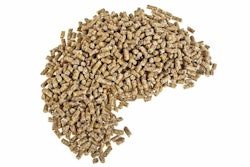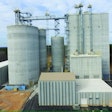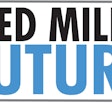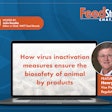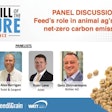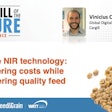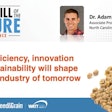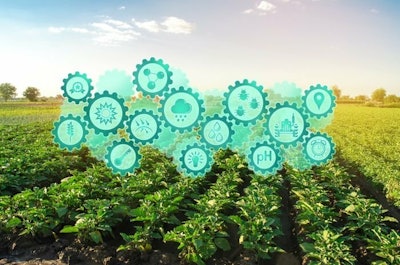
From cellular meats to the metaverse, 2022 promises to be another eventful year for ag tech investments.
Aliens visiting our planet could be excused for questioning our sanity. The divergence between what the inhabitants of the Earth say is important and how we actually behave has never been greater. We are more global than ever before, but also more divided. We talk a good game on sustainability but use technology that, on closer examination, isn’t that sustainable. A pandemic has disrupted everything and yet we expect the world to continue as it was before.
Many contradictions can also be found in the agrifood business. Here is a “hot or not” analysis of seven ag tech trends:
1) Moment of truth for cellular meats?
Literally promising to save the planet and generating more column inches and hype than any other food technology despite having delivered remarkably little so far, lab meats lead the pack for internal contradictions.
The idea looks great: figure out how to produce “meat” at factory levels — animal proteins without the involvement of animals. What could go wrong?
Iwrote aboutmany of the possible limitations three years ago, but arecent reviewby Joe Fasser illustrates even more clearly the inconvenient truth that supplying just 10% of the world’s meat production will require 4,000 factories, at a cost of almost US$500 million each, or US$2 trillion.
Moreover, as is typical with sensitive cell-based systems, the need to avoid bacteria, toxins and viruses requires tight controls, including high levels of antimicrobials (mainly antibiotics), biosecurity with piped-in oxygen, and Class 6 clean rooms, because any infection will take down the entire production system.
Finally, even if those hurdles could be overcome, the costs of production are still astronomical, i.e. the average quarter-pound burger is projected to cost US$100 in a restaurant.
Another report suggests costs ranging from 100 to 10,000 times the cost of producing commodity meat. Successful cell cultivation systems are disproportionately reliant on fetal bovine serum, harvested at slaughterhouses from calf fetuses. This is not likely to sound attractive to either vegetarians or consumers who want slaughter-free meat. Throw in the use of growth hormones, expensive amino acids and antibiotics and “cellular” or “lab grown” meats are beyond the pale for the consumer segments they expect to attract.
Verdict:Not
2) Will the metaverse come for the food chain?
XR, VR, MR, AR — how well do you know your acronyms? How about connecting it all with AI and blockchain?
Dramatic announcements by Microsoft, Google, Nvidia and Apple on investing in extended reality (XR) companies as they seek to build their own “metaverses” have been overshadowed by the renaming of Facebook as Meta, with avision that the online world will embraceXR, with virtual reality (VR) and augmented reality (AR) delivered to customers through smart goggles and headsets. However, the unspoken reality behind these big promises is that, to deliver on these promises, people must become comfortable wearing whatever apparatus on our heads that the Big-5 AI giants (known by theacronym MAMAA) want to deliver the content.
So far, humans have been remarkably resistant to the idea of walking around in public wearing uncomfortable headsets, e.g. Oculus. Not only do they feel self-conscious, but the physical risks are real — nevermind the potential for nausea.
In specific situations, applying extended reality (XR) or increasing what our eyes can see, allowing our senses to interpret what is going on around us, through technologies such as augmented reality (AR), creating a virtual world (VR) or something in between, which is described as middle reality (MR), provides extraordinary promise.
Food businesses can use XRto train employees, as a teaching tool for repairs or other occasional requirements, to improve the consumer experience pre-purchase, and to allow greater transparency for consumers of the origins or contents of their food.
QR codes on packaging combined with a smartphone or similar device already make all these experiences available today, in a simpler manner, enhancing the consumer experience.
Verdict:Warm, but getting hotter.
3) The collapse of vertical farming?
The unraveling of theAeroFarmsSPAC (special purpose acquisition company) set off a chain reaction which is sending vertical farming toward “the trough of disillusionment.”
Investment sentiment, which had driven SoftBank, Google and Jeff Bezos to invest, suddenly had an about-face, best described as a reaction to the realities of the true costs of vertical farming,questions over the sustainabilityand ability to deliver on the promise of better food.
However, vertical farming also sits within the broader category ofcontrolled environment agriculture (CEA), which includes greenhouses. It has been interesting to see how technologies developed for vertical farming are being applied to traditional models, such as the horizontal greenhouses, in ways that allow for greater precision in the application of nutrients, water, heat and disease control. This has been perhaps the most exciting development.
Can we use what we are learning to produce fruit, vegetables, flowers in climates that reduce the footprint of indoor agriculture? How can sensors, robots, smart energy systems and artificial intelligence be used to generate automated systems requiring less plant protection, less irrigation and external energy in 2022 and beyond?
Verdict:Cold year for vertical farming investors, but broader CEA sector will use those learnings.
4)Sustainability
Humorists maintain that if both sides in a negotiation leave the room unhappy then probably progress is being made, and that certainly seems to fit the outcome ofCOP26climate change conference in Glasgow. The scale of collective coordinated change being attempted through COP26 is at a level never previously achieved — but many agribusiness and agricultural commentators have not been onside, often believing they can fight the tide.
A leading commentator Dr. Frank Mitloehner has established aGHG blogto address the concerns with facts. It is increasingly clear that agriculture practices will be forced to change, especially with respect to cattle and other ruminants, and 2022 will show this.
Estimating the actual footprint of meat and milkusing the full carbon cyclecan help to mitigate concerns about the impact of agriculture on climate change, but the bottom line is the same: Consumers are facing a series of unpleasant choices and agriculture is more likely to come under more pressure than other industries because “it is an easier decision to make.”
Reduced use of fossil fuels for transportation (airplanes, cars), heating and air conditioning, having smaller families, limiting the construction of buildings (particularly use of cement) and consuming local (but therefore limited) may all have more impact on climate change than agriculture, but they are unpopular changes for consumers to make. They also object to these choices being imposed on them, through laws or taxation, and vote both with their checkbook and at the ballot box. Behavioral change is difficult.
农业的出路并不容易,但我的技术s an ally. Intensive-scale agriculture is inherently more efficient, with lower food costs, with a lower environmental footprint. Although the smallholder, with a small farm, is seen by many as the attractive face of farming, from a welfare and environmental perspective, the realities are still in favor of larger production farms.
Another astonishing example is the growth in biofuels, particularly the California-driven new market for renewable diesel, which has resulted in the construction of 10 new crushing plants being announced in the U.S., at a probable investment of US$2 billion, and with repercussions including a flood of new soybean meal as a byproduct.
Much of this has been highlighted in excellent analysis byWalter Cronin. The impact of methane and other biofuels generation on farms may mean thatdairy producers might expect more profit from fuel than from the milk. A recent report suggested there are 317 manure-based anaerobic digestors in the U.S., and 38 plans to upgrade biogas to renewable natural gas (RNG).
If a food company or agribusiness wants to remain relevant in 2022, it must embrace the language and metrics provided by theSDG framework,这些metri公开发布他们的反应cs in the form of sustainability reports, with examples from all of the leading food companies and agribusinesses, e.g.Origin Enterprises.
Verdict:Hot
5)Digital farming
Agrifood tech has had a blowout year with estimated byAgfunder at US$26.1 billionraised in 2020, 16% above the same period in the previous year.Finistere reported US$22.3 billion,while the Thrive reports also showed big increases. Different values across different reports indicates differences in what is being reported: crop tech, livestock tech, food tech and supply chain tech.
很明显,去年,第一蒂姆e, more than half of the money raised was for technology companies/startups upstream in the food supply chain.
Farmers and food producers have been excited for the digital dawn to come, but so far most of what they have seen is too expensive and not really fit for purpose: technological solutions seeking real world problems. Finally, that appears to be changing. More startups are hyper focused on existing real problems. More crop farmers are embracing variable rate application of fertilizer, precision technologies to reduce the application cost of crop production. Robots are taking over some of the back-breaking work in the fields (particularly in the picking of fruits and flowers) and in processing plants (especially in some of the most dangerous and repetitive positions). Sensors enable targeted micro-irrigation in greenhouses andcamera vision-based AIto observe feeding and management of dairy cows.
As more innovators focus on practical applications, with more quantifiable results and more realistic price tags, producers are more willing to trial new ways of doing things.
Verdict:Hot in 2021, and beyond for the coming decade.
6) China: ‘Sneezing’ economy to give global economy the flu?
2022 is looking to be a very challenging year for the Chinese economy, which will affect the import of food and feedstuffs promises. In my experience, the impact that China has on world agricultural commodity prices is seriously underestimated. For example, after a statement from a top Chinese public health leader that drinking milk can help ward off COVID, China’s increase in milk consumption in 2021 has taken up nearly the entire global increase in milk production.
What, where, when, how much and at what price Chinese agribusiness purchasers buy agrifood products often seems carefully coordinated. This isn’t that surprising, given that China has a centralized economy and is the world’s largest importer. It is obvious that the buying at this scale will have a global impact on the price of milk powder, soybean meal, dried distillers grains, pork, chicken, corn and more, so to benefit from this makes sense.
So far, China has weathered COVID better than any other economy, and online home purchasing seems to have driven Chinese tech exports further and faster. However, for China to export more, it also requires other world economies to do well. China is vulnerable to recessions in pump-primed economies and supply chain disruption. The fallout from the implosion ofEvergrande, the Chinese property giant, is likely to have ripple effects throughout the Chinese economy over the course of the coming year, since the government has signaled it is willing to let it fail rather than reward extreme risk taking.
So China is still the major driver of agriculture prices, and food and agri-exporters in the U.S., EU, Southeast Asia and Brazil would do well to actively monitor Chinese economic news.
Verdict:Hot, still the main story for agriculture commodity prices.
7) COVID-19: From pandemic to endemic?
Will COVID be with us forever? Despite obsessive coverage in the media, the future is not much clearer now than it was a year ago. Are we on a conveyor belt of viral mutations, with the planet lurching from one vaccination cycle to another? COVID has changed a lot of things, and nobody knows which changes will stick — and which will usher in new ways of living.
On the plus side, travelers will attest to the fact that airplanes and hotels have never been so clean. More crucially, the pharmaceutical industry has demonstrated a breathtaking capacity to develop, produce and launch new vaccines in record times. Other changes are more ambiguous.
Early disruptions in supply chains led to panicky calls to “bring everything home,” but more recently it is becoming clear that many supply chains are more robust than it seemed initially. Remote working has improved working conditions and opportunities for many, dis-improved it for others, and opened serious discussions on where and when people can or should work.
Aside from the implications for employment and careers, changes in urban planning, commercial real estate, and tax structures are all but certain. Remote learning has been a struggle at every educational level, but the field is evolving rapidly, figuring out what works, what doesn’t, what tools are effective and what new tools might be more effective. The integration of technology into teaching has accelerated, and education for the next generation is likely to look quite different.
So what next? Pandemic or endemic? The optimistic view is that thevirus is burning out, with the omicron variant infecting more people but with fewer health effects for the vaccinated. Omicron’s fast transmission ratesmay crowd out other variants, imparting immunity to it and most notably the delta variant, long enough for the world’s population to reach herd immunity. In such a scenario, the beneficiaries will be those who vaccinate heavily, but also those with large young populations, where the virus results in few fatalities or hospitalization.
Of course, those were predictions of a year ago, when a series of analysts announced that the COVID virus was almost burnt out, but this time it feels more likely to be correct. If so, countries with older populations, countries that can’t or don’t vaccinate, or that use less-effective vaccines will be most at risk. These countries will continue to suffer economically — and depending on their role within global supply chains — their problems may result in random but significant effects on world trade.
Either way, COVID’s effect on the world’s food production systems and supply chain are clear: It accelerates the growing move toward automation, and away from a heavy reliance on human labor. It fuels a greater commitment to biosecurity and blockchain-mediated traceability. And finally, it opens the possibility that the same vaccine development technology that has led to the COVID vaccines will be able to find solutions to some of the world’s thorniest animal diseases: African swine fever, avian influenza and myriad cattle diseases.
Verdict:Hot, but cooling dramatically in the second half of 2022.
Follow Aidan Connolly on LinkedIn for more forwarding-looking insights:https://www.linkedin.com/in/aidanjconnolly/
Announcing the Feed Mill of the Future digital supplement
WATT’s feed brand’s Feed Strategy and Feed & Grain magazines join forces to launch the monthly Feed Mill of the Future digital supplement. Each edition aims to provide animal feed industry stakeholders with forward-looking content, market insights and a spotlight on the leading-edge technologies shaping the global feed industry of tomorrow.
Subscribe today!https://bit.ly/3dWzow7






